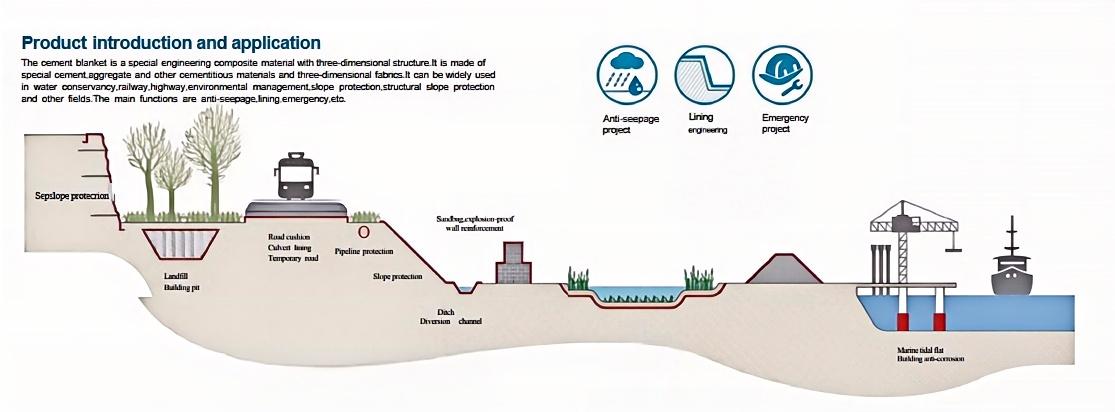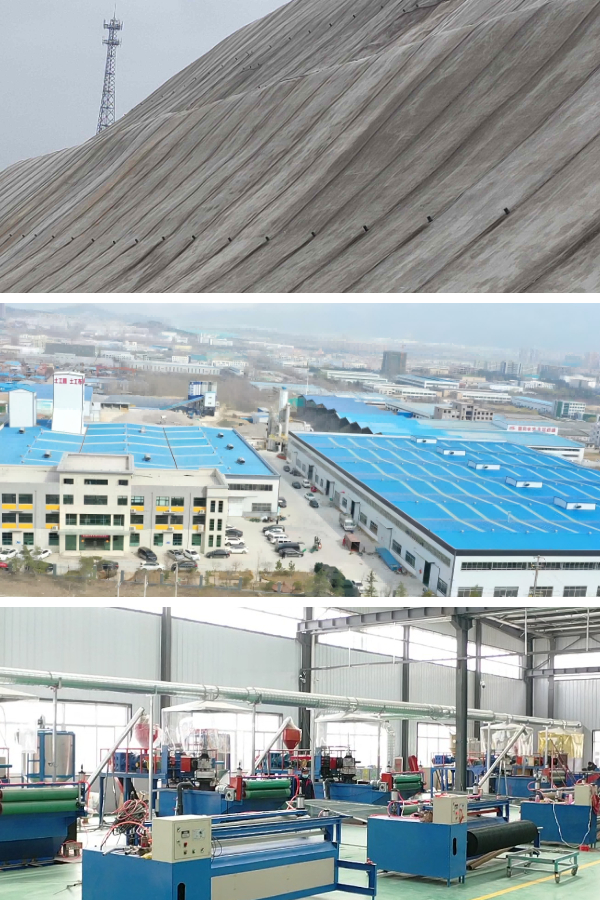Cost Comparison: Cement Blanket vs. Poured Concrete
When it comes to development projects—whether you’re constructing a preserving wall, repairing a driveway, or growing a foundation—choosing the proper fabric is key. Two famous preferences are cement blanket (also acknowledged as concrete fabric or cement canvas) and common poured concrete. Both have their strengths, however value is frequently the figuring out factor. In this guide, we’ll spoil down the charges related with each, from substances to labor, to assist you figure out which suits your budget.
What Are Cement Blankets and Poured Concrete?
Before diving into costs, let’s make clear what these substances are.
Cement blankets (including concrete fabric and cement canvas) are innovative, bendy sheets made of a material matrix infused with cement. They’re lightweight, effortless to transport, and set off with water—simply unroll, wet, and let them harden into a durable, concrete-like structure. They’re designed for rapid installations, making them best for initiatives the place time is critical.
Poured concrete, on the different hand, is the traditional cloth we all know: a combination of cement, sand, gravel, and water. It’s poured into forms, then left to therapy over days or weeks. Poured concrete is recognised for its energy and versatility, however it requires greater instruction and labor.
Material Costs: Cement Blanket vs. Poured Concrete
Material prices are regularly the first element householders and contractors consider. Here’s how the two compare:
Cement Blanket (Concrete Cloth, Cement Canvas)
Cement blankets are bought in rolls, with expenditures various primarily based on dimension (length and thickness) and quality. On average, you can assume to pay greater per rectangular foot for cement blanket than for the uncooked substances of poured concrete. However, this greater upfront value is offset through different savings.
Why the greater price? Cement blankets are pre-manufactured, combining cloth and cement in a ready-to-use form. This convenience comes with a manufacturing value that’s exceeded on to buyers. But remember: you’re now not simply paying for the material—you’re paying for ease of use, decreased waste, and quicker installation.
Poured Concrete
Poured concrete’s fabric charges are usually decrease per rectangular foot than cement blankets. The foremost prices are cement, aggregates (sand and gravel), and water. These substances are extensively available, which continues costs competitive.
However, poured concrete has hidden cloth costs. You’ll want varieties (wood or metal) to structure the concrete, which provides to the total. Plus, if you overestimate the quantity needed, extra concrete goes to waste—another price to consider.
Labor Costs: Time Saves Money
Labor is regularly the largest rate in construction, and here’s the place cement blankets shine.
Installing Cement Blankets (Concrete Cloth, Cement Canvas)
Cement blankets are designed for speed. A small crew can unroll, position, and moist a cement blanket in hours, even for large projects. There’s no want for mixing, pouring, or putting up complicated forms. Once activated with water, the blanket hardens quickly—often in 24–48 hours—allowing you to go on to the subsequent segment of your assignment sooner.
This pace reduces labor hours significantly. For example, a 100-square-foot holding wall would possibly take 2–3 employees a full day to whole with a cement blanket. With poured concrete, the equal challenge may want to take 2–3 days (including shape setup, pouring, and preliminary curing), doubling or tripling labor costs.
Pouring Concrete
Poured concrete is labor-intensive. First, you want to construct and tightly closed forms, which requires measuring, cutting, and reinforcing substances like wooden or steel. Then, the concrete ought to be combined (either on-site or delivered by way of a truck), poured into the forms, and smoothed to make sure an even surface.
After pouring, you’ll want to wait for the concrete to cure—usually 7–10 days for mild use, and up to 28 days for full strength. During this time, the region should be blanketed from weather and foot traffic, which can extend different work. All of these steps add up to extra labor hours and greater costs.
Project Size and Accessibility: When Cement Blanket Wins
The dimension of your task and how handy it is to get entry to the web site additionally affect costs—here, cement blankets frequently have an edge.
Small to Medium Projects
For small tasks like backyard walls, route repairs, or drainage ditches, cement blankets are some distance extra cost-effective. Their rapid set up capability you keep away from paying for more than one days of labor, and their light-weight nature makes them convenient to transport to tight areas (like backyards with slender gates).
Poured concrete, on the different hand, can be overkill for small projects. The price of forms, delivery, and labor regularly outweighs the benefits, making it a pricier choice.
Hard-to-Reach Areas
If your task is in a far off place or an region with restricted get right of entry to (e.g., a hillside, a outdoor barring car access), cement blankets store time and money. You can elevate rolls of concrete fabric or cement canvas by means of hand, fending off the want for heavy equipment to supply and pour concrete.
Poured concrete requires vehicles to supply moist concrete, which isn’t continually viable in tight or far flung spots. In such cases, you’d want to combine concrete on-site—adding greater labor and gear costs—or pay greater for specialised delivery, riding up the whole expense.
Long-Term Costs: Durability and Maintenance
While upfront prices matter, long-term sturdiness and renovation prices are additionally key.
Cement Blanket Longevity
Cement blankets (including cement canvas and concrete cloth) harden into a dense, weather-resistant fabric that’s designed to ultimate for decades. They’re resistant to cracks, erosion, and UV damage, which means little to no upkeep is wished as soon as installed. In fact, their bendy base helps them face up to minor floor motion higher than rigid poured concrete, lowering the danger of steeply-priced repairs.
Poured Concrete Maintenance
Poured concrete is strong, however it’s inclined to cracking over time—especially if the floor shifts or the concrete wasn’t desirable cured. Cracks can let in water, main to erosion or similarly damage. Repairing cracks requires filling them with concrete patches, which provides to long-term costs. Additionally, poured concrete may additionally want sealing each few years to shield in opposition to water damage, some other price to aspect in.
Which Is More Cost-Effective?
So, when all is stated and done, which fabric affords higher value?
Choose cement blankets (concrete cloth, cement canvas) if you’re working on a small to medium project, want a rapid installation, or have restricted website access. The greater fabric price is offset by using decrease labor expenses, quicker completion, and minimal maintenance.
Choose poured concrete** for large, heavy-duty initiatives (like foundations or structural walls) the place most energy is critical. While labor and structure fees are higher, the decrease cloth expenses and long-term structural integrity might also make it really worth it for large-scale builds.
Final Thoughts
Cement blankets, concrete cloth, and cement canvas are revolutionizing small to medium building tasks with their cost-saving velocity and ease of use. Poured concrete remains a staple for large, structural work, however its greater labor and upkeep fees can’t compete with cement blankets in many scenarios.
When planning your next project, weigh the upfront fabric charges towards labor, accessibility, and long-term maintenance. In most cases, you’ll discover that cement blankets provide a smarter, extra low-budget solution.
Contact Us
Company Name: Shandong Chuangwei New Materials Co., LTD
Contact Person :Jaden Sylvan
Contact Number :+86 19305485668
WhatsApp:+86 19305485668
Enterprise Email: cggeosynthetics@gmail.com
Enterprise Address: Entrepreneurship Park, Dayue District, Tai 'an City,
Shandong Province








